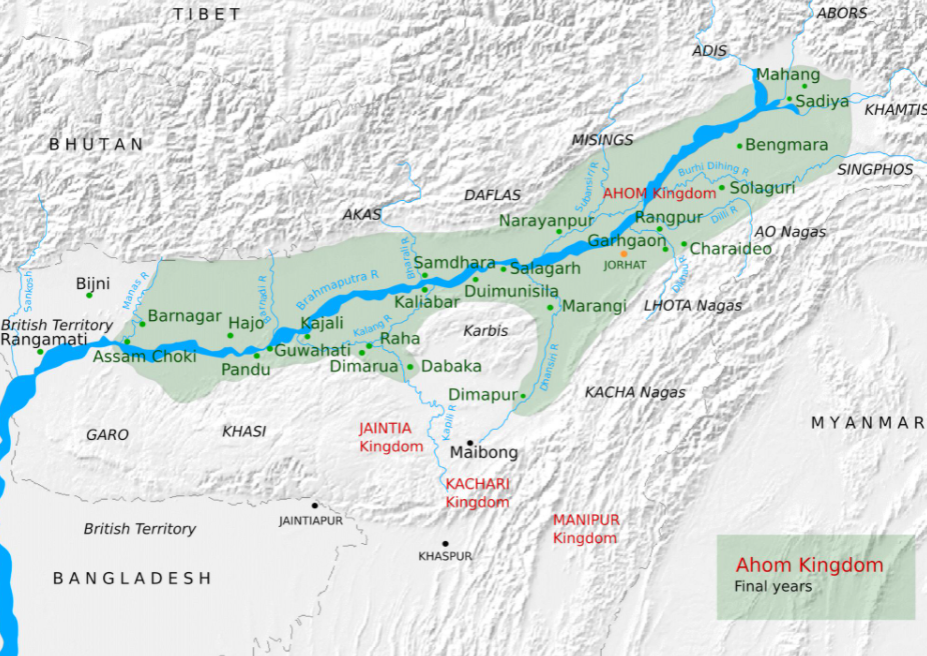Ahom Kingdom:
-
Founder:
-
Chaolung Sukapha was a 13th century ruler who founded the Ahom kingdom that ruled Assam for six centuries.
-
The Ahoms ruled the land till the province was annexed to British India in 1826 with the signing of the Treaty of Yandaboo.
-
-
Political Setup:
-
Ahoms created a new state by suppressing the older political system of the bhuiyans (landlords).
-
The Ahom state depended upon forced labour. Those forced to work for the state were called paiks.
-
-
Society:
-
Ahom society was divided into clans or khels. A khel often controlled several villages.
-
Ahoms worshipped their own tribal gods, yet they accepted the Hindu religion and the Assamese language.
-
However, the Ahom kings did not completely give up their traditional beliefs after adopting Hinduism.
-
Intermarriage with local also increased assimilation processes of Ahoms in Assamese culture.
-
-
Art and Culture:
-
Poets and scholars were given land grants and theatre was encouraged.
-
Important works of Sanskrit were translated into the local language.
-
Historical works, known as buranjis, were also written, first in the Ahom language and then in Assamese.
-
-
Military Strategy:
-
The Ahom king was the supreme commander of the state as well as the Military.
-
The Ahom king himself led the state forces in the time of wars.
-
The Paiks were the main army of the state.
-
There were two types of Paiks i.e. serving and non serving.
-
The non-serving Paiks constituted a standing militia which could be mobilized at a short notice by the kheldar (an expert military organizer).
-
The full contingent of the Ahom Army consisted of infantry, navy, artillery, elephantry, cavalry and spies.
-
The main war weapons consisted of bows and arrows, swords, Javelins discus, guns, match-locks and cannons.
-
The Ahoms sent spies to the enemy’s camp to study the strength and the war strategies of the enemies before leading an expedition.
-
The Ahom soldiers were experts in guerilla fighting. Sometimes they allowed the enemies to enter the country, then cut off their communications and attack them in front and rear.
-
-
Few important forts: Chamdhara, Saraighat, Simlagarh, Kaliabar, Kajali and Pandu.
-
They also learnt the technique of constructing boat bridges in the Brahmaputra.
-
Above all, the mutual understanding among the civil and military wings, unity among the nobles always worked as strong weapons of the Ahoms.
